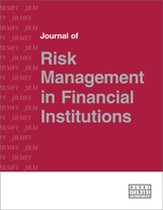Measuring the magnitude of differences across multilateral lending institutions’ credit quality : From ordinal rank-ordered scales to ratio-level measurements
Abstract
This paper proposes a robust quantitative method to measure the magnitude of differences in credit quality among multilateral lending institutions (MLIs). Leveraging multiple discriminant analysis (MDA) and principal component analysis (PCA), we transform ordinal credit rating scales, traditionally provided by international credit rating agencies (CRAs), into precise ratio-level measurements. The developed methodology directly addresses a critical limitation of ordinal rating systems — their inability to quantify exact differences between closely rated institutions. For risk managers, accurately quantifying such differences is crucial, as credit quality nuances significantly affect the pricing of derivatives, collateral agreements, the calculation of credit valuation adjustment (CVA)-related capital charges and, more broadly, the assessment of institutional capital requirements. In the absence of an objective and fundamentals-driven measure of credit quality differentials, risk managers are often compelled to rely on market-driven indicators — such as credit default swap (CDS) spreads or bond yields — which, while widely used, are inherently prone to volatility, short-term noise and potential distortion. Such reliance can lead to misinterpretation of underlying credit fundamentals, particularly in periods of market stress, where signals may be driven more by sentiment than by structural creditworthiness. Given the increasing adoption and strategic importance of credit risk transfer instruments by MLIs — mainly to enhance financial resilience, manage single name concentration risks and expand lending capacity — a rigorous methodology to address credit risk mismatches among participating institutions is essential. Furthermore, our methodology has broader implications beyond quantifying credit quality differentials. By providing a numerical representation of credit opinions, as conveyed through agency-assigned ratings, the framework offers insights into the behavioural patterns of rating agencies. For example, a larger numerical distance between classifications may signal a more conservative or deliberate approach to rating adjustments by a given agency. More broadly, the proposed framework has the potential to inform revisions to existing rating methodologies employed by the leading CRAs (eg S&P, Moody’s, Fitch). By more accurately capturing subtle differences in credit quality, it could contribute to enhanced transparency, comparability and accuracy in credit assessments.
The full article is available to subscribers to the journal.
Author's Biography
Jonas De Oliveira Campino is a Lead Strategic Risk Management Specialist in the Office of Risk Management at the Inter-American Development Bank (IDB) in Washington, DC, specialising in capital adequacy modelling and stress testing simulations. Jonas holds a PhD in international business management with a minor in international economics and an MBA in international business management from George Washington University (GWU). He also holds an MA in international trade and investment policy from the Elliott School of International Affairs at GWU and a BA in economics from the University of Maryland at College Park.
Francisco Javier Vidal Pérez is a Treasury and Risk Senior Specialist at the Inter-American Development Bank (IDB) in Washington, DC.
Citation
Oliveira Campino, Jonas De and Vidal Pérez, Francisco Javier (2025, September 1). Measuring the magnitude of differences across multilateral lending institutions’ credit quality : From ordinal rank-ordered scales to ratio-level measurements. In the Journal of Risk Management in Financial Institutions, Volume 18, Issue 4. https://doi.org/10.69554/JNYF4891.Publications LLP
